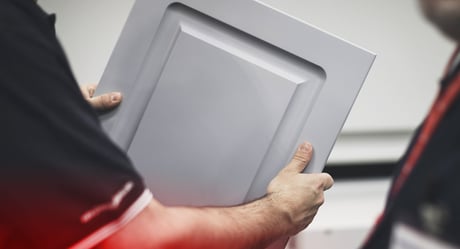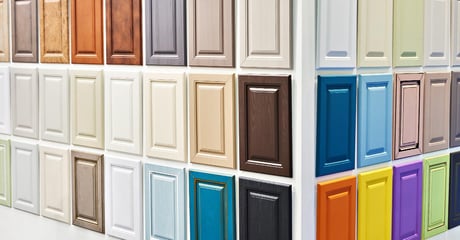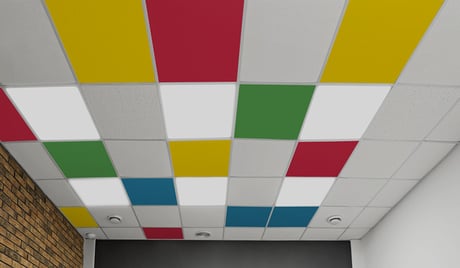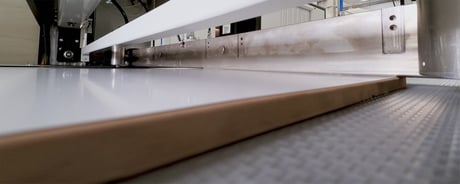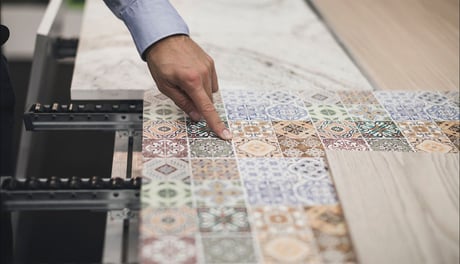
One of the key advantages involved in vacuum application technology is the degree of transfer efficiency achieved - almost 100% - meaning close control over lacquer consumption and very little waste – all adding up to significant savings while achieving superb coating quality.
Until recently, this technology was used for edges, in terms of coating, sealing or even waterproofing. Today, we have developed vacuum application solutions for flat panels as well as edges, which can be of all shapes and sizes.
Vacuum coating: flat panels
Manufacturers of cabinet doors, panels and bathroom furniture will welcome the recently released vacuum application machine, Smartvacuum. Any wood or wood-based flat panel can be coated using this technology, especially those with rounded edges.
Vacuum application avoids contact between the application head and the substrate. This enables clean, efficient processing using 100% UV acrylic paint in a single pass. Up to 140 g/sqm are deposited homogeneously, thereby avoiding product build-up on any sections of the panel. The process is simple, clean, eco-friendly and cost-efficient. Flash-off is performed after basecoat application and prior to the panel completing its drying in a UV-R oven. Using a 100% solid UV product, this makes it a relatively sustainable process and the coating is more stable over time compared to polyurethane or polyester-based products.
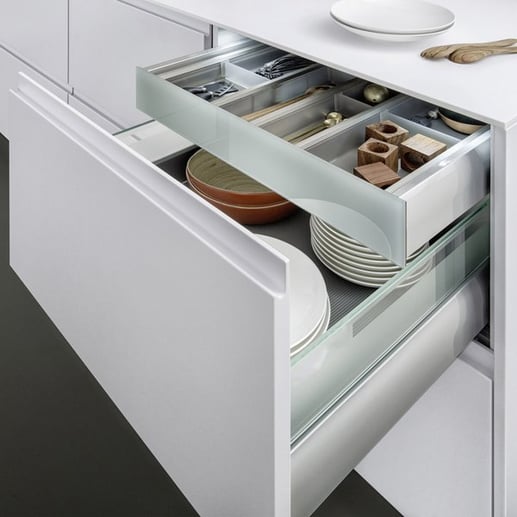
Vacuum application machines: edges
Vacuum application machines for edges have been around for longer, some of which combine sanding operations as a complete solution. We provide 3 different systems according to specific needs.
The perfect match for Smartvacuum is Smartedge, a machine which handles straight and shaped panel edges. The vacuum system will coat any type of edge as the application head adapts to each shape. When fitted with Edge & Go, consisting of an application head with interchangeable straight or shaped slats, changing from one edge shape to the next is accomplished without turning off the vacuum tower. In terms of speed, switching from a straight edge with a 3 mm radius to a J-Pull handle edge, for example, takes less than 15 seconds.
Smartvacuum and Smartedge use the same technique and the same lacquer. That makes it simple to achieve the best junction seam between the flat surface and the edge of the panel.
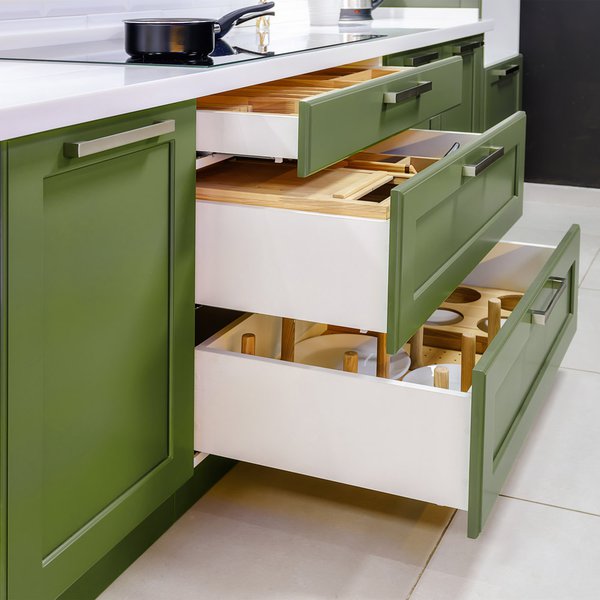
Sealing solutions
Sealing operations are performed to protect the integrity of a product by ensuring the edges are not vulnerable to humidity for example, something which compromises the durability of a panel or other item.
Vacuum systems for the sealing of edges include another machine in our range: Talent is a patented solution for the sealing of the shaped edges of laminated panels, coated with quick-drying water-based products for application on various types of material. Used as a sealing technique for items found in several sectors, including panels, mouldings, fibreglass ceiling panels, polycarbonate sheets, fibre cement tiles and many other materials used in the construction industry, Talent works with water-based coatings, also suitable for UV curing, 100% UV acrylic paints, sealants (wax, paraffin, glue).
Edge impregnation
A solution dedicated to sealing the edges of panels is required when the risk of water penetrating the panel is an issue. In certain instances, cabinet doors, but more frequently panels for flooring applications will need to have their edges well sealed so as to avoid quality decreasing over time. Hybrid implements a patented technique to impregnate the panel edge with a special UV polyurethane glue to protect against humidity and other harmful elements.
Contact us and discuss your needs with a finishing expert.
